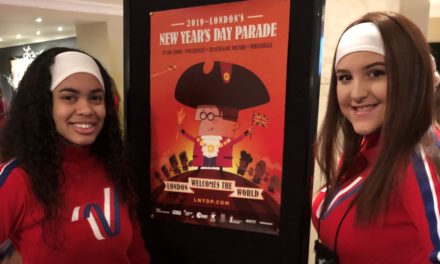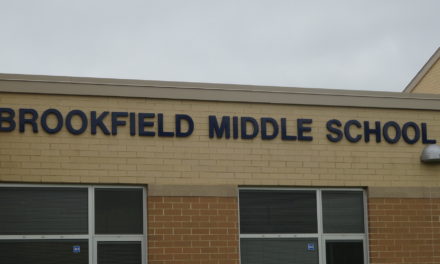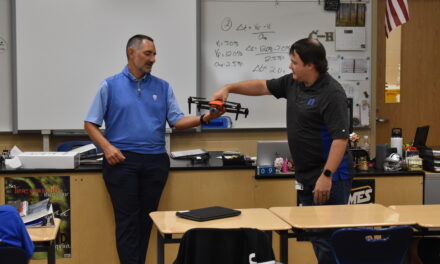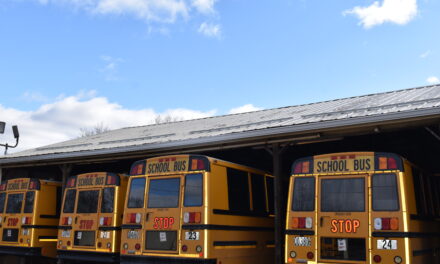In a topsy-turvy year that has seen Brookfield Local School District mixing teaching kids in school and at home, and then having to go all-remote as the COVID-19 pandemic worsened, things are about to change again.
First off, students will return to school for in-person learning for four days a week beginning Jan. 20, said Supt. Toby Gibson.
Secondly, students whose parents choose to to keep them remote learners will be taught by Brookfield teachers and not a third party as had been previously announced, he said.
Since Jan. 4, the district has been using a mix of the hybrid and synchronous learning models, in which half of students attend school in person two days a week and the rest follow their teachers’ in-class lectures at home on their computers. Teachers have had Mondays to prepare for the week, and district maintenance and cleaning personnel use that day to prepare the school and disinfect it following weekend athletic games and practices.
There is no school Jan. 18 for Martin Luther King Day, so teachers will have Jan. 19, a Tuesday, to prepare for students returning on Jan. 20, Gibson said.
 Beginning Jan 25, teachers will have Mondays again to prepare for their remote learners, and students who come to school will do so four days a week. Students will have no assignments on Mondays, although some teachers may put material online to prepare students for the week, Gibson said.
Beginning Jan 25, teachers will have Mondays again to prepare for their remote learners, and students who come to school will do so four days a week. Students will have no assignments on Mondays, although some teachers may put material online to prepare students for the week, Gibson said.
Although he prefers to have all kids in school, Gibson said that having some remote learners will “thin classrooms out.”
He feels comfortable bringing more kids back – he expects 12 to 15 percent of students will stay remote – because a state study has shown that students who test positive have not spread the virus to other students if the school is adhering to masking, social distancing and sanitizing guidelines.
“If the student does test positive, there hasn’t been that spread from student to student in the classroom setting, because everybody’s following that health order where you have to wear a mask,” Gibson told the school board Jan. 13. “We comply with that. Our students wear masks. When they’re in the classroom, every desk will have a divider/sneeze guard.”
With students back in school, social distancing “will be anywhere from three to six feet, depending on the class size,” he said. “I’ve visited a few schools that have been all-in since the beginning of the year, and what we have planned, set up, is the same as what they’ve been doing.”
For the first few weeks, students will eat in their classrooms behind the barriers that are on their desks. This setup will “let people’s anxieties relax a little bit until we get used to more students, more people in the building,” Gibson said. “At that point, we’ll come back to the cafeteria.”
He said the middle and high schools, which have 310 and 321 students respectively, can be adequately spaced out in the cafeteria, while officials still are working on whether that can be done for the elementary school, which has an extra grade and 384 students.
The Ohio Department of Health has eased some guidelines. If a student tests positive, “the students around them within six feet do not have to quarantine, as long as everybody’s had their mask on,” Gibson said.
There will be times when students will have masks off in the classroom, and when eating. “That opportunity (for virus spread) always exists because you have your mask off,” he said. “It limits the number that you potentially would have to (quarantine).”
Gibson considers the all-in experiment “short term.”
“As things change so quickly, we could find ourselves in remote, depending on what’s going on in the district or in the school,” he said. “We’re gonna give all-in a chance.”
As far as the remote learners, the decision to keep having Brookfield teachers teach them reflects on how far the district has come since the governor shut down schools back in March, Gibson said.
“We had zero capabilities of being remote teachers and educators” when schools shut down, he said. “We printed thousands of packets Friday the (March) 13th and Monday the (March) 16th – thousands of them, and we had to figure out how to get them to people, how to collect them.”
The district then acquired enough Chromebook computers for every student to have one, and provided mobile wifi hot spots so students would have internet access, he said.
Since school resumed after the holiday break, teachers have been teaching in-class and remote learners simultaneously, something that “a few months ago, I didn’t think was feasible,” he said. “Our ability to do that changed my thinking.”
Keeping the instruction of remote learners in-house means that, if the district remains all-in, parents of remote learners still will have the option to send their kids to school for in-person learning at the beginning of the fourth grading period, Gibson said.
“If they work with a third-party vendor, that would not be possible,” he said. “We wouldn’t know if they’re ahead, behind, or on a different topic. This allows that flexibility for those that are remote.”
Gibson added that the way the youngest all-remote students have been taught will not change.
“K(indergarten)-2(nd grade) is a little bit different,” he said. “Teachers still put videos for parents to access at a later point. They (teachers) teach the lesson via video, and they (parents) can watch it with their kids after work and those types of things.”








